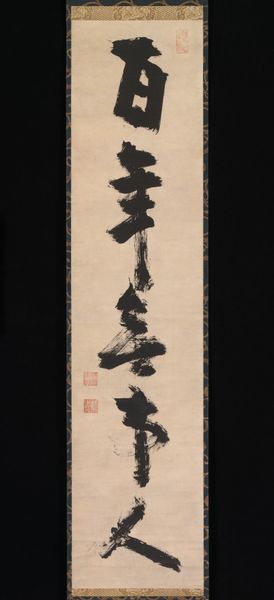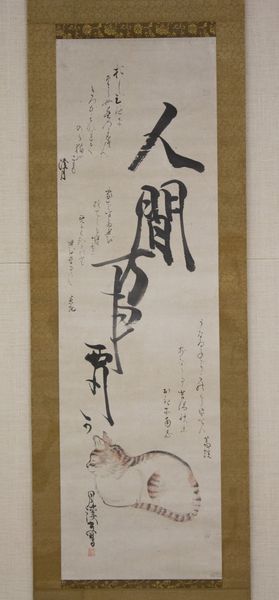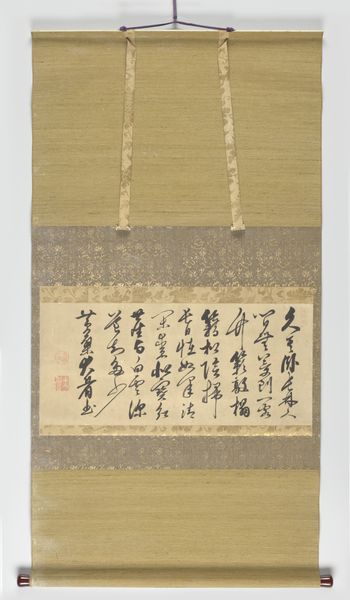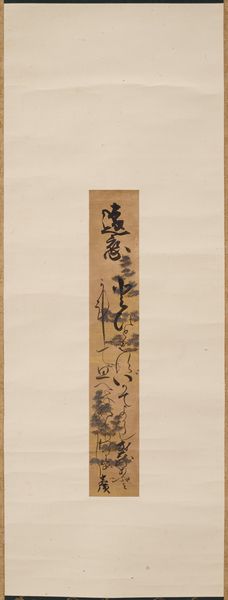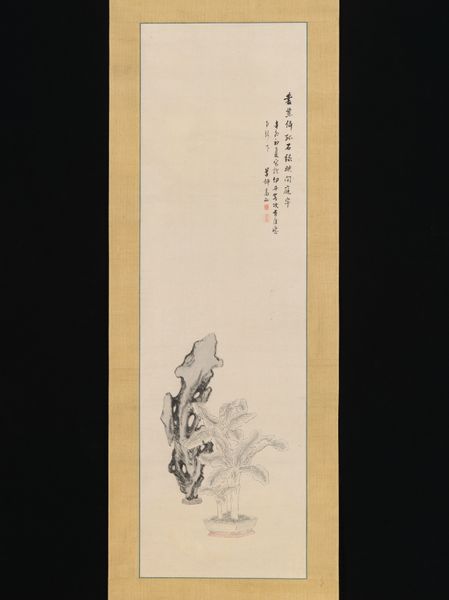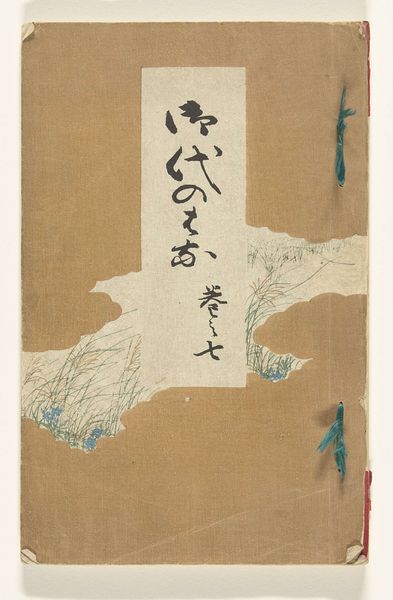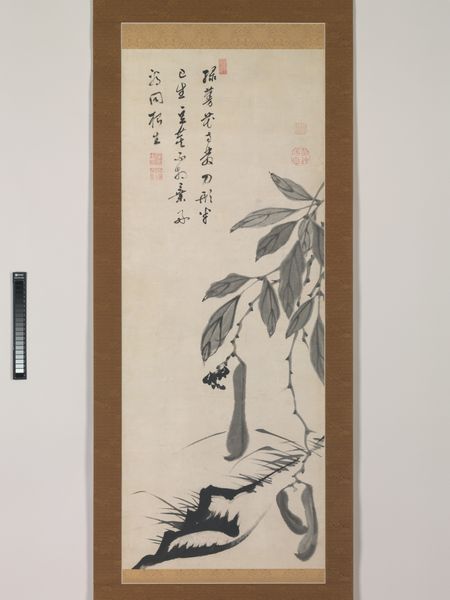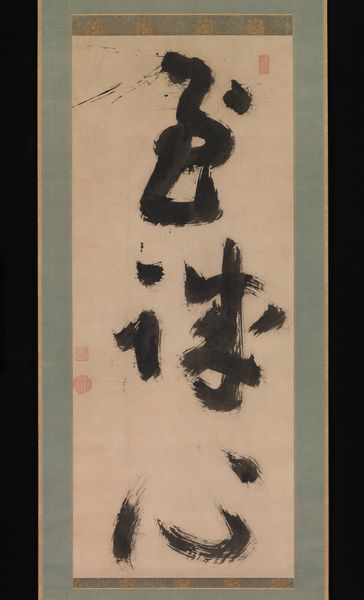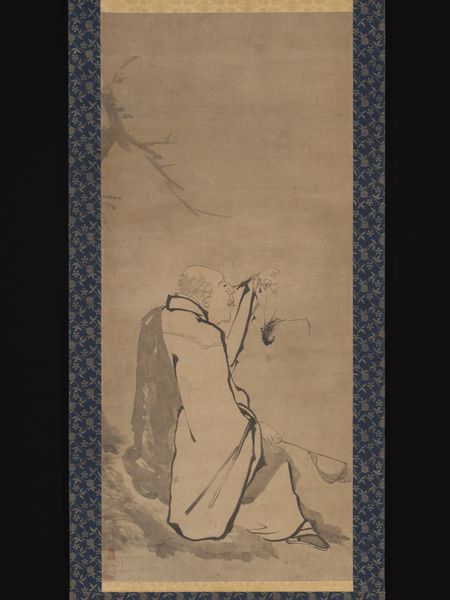
drawing, paper, ink
#
drawing
#
aged paper
#
toned paper
#
narrative-art
#
asian-art
#
ukiyo-e
#
figuration
#
paper
#
ink
#
orientalism
#
calligraphy
Dimensions: Image: 38 1/2 x 11 1/4 in. (97.8 x 28.6 cm) Overall with mounting: 68 1/2 x 11 3/4 in. (174 x 29.8 cm) Overall with knobs: 68 1/2 x 14 in. (174 x 35.6 cm)
Copyright: Public Domain
Curator: Gazing at Eiraku Hozen’s “Fox with Staff (Hakuzōsu)” from the mid-19th century, my first thought is of elegant solitude. Editor: I see more deliberate choices – look at the aged paper, its slight imperfections. It seems carefully selected as the ground for this ink drawing to accentuate its historical dimension and the very idea of legacy. Curator: Exactly! There’s a lovely layering. You have this rather simple drawing, a few strokes of ink bringing a fox figure to life on toned paper, topped with graceful calligraphy—a trinity of elements each talking about the other in quiet tones. Editor: It’s a brilliant use of minimalist resources, which demands careful selection. I bet Hozen was quite specific when choosing ink and the tools of application. You can see how the paper interacts with the ink washes. It's about precision, not waste. Curator: Indeed. The artist coaxes magic from humble means. This solitary fox becomes this potent little whisper in ink, striding out of the unknown, guided by the gentlest touch on aged paper. What do you suppose Hakuzōsu represents to Hozen? Editor: A fox spirit holding a staff? We have to think of labor, maybe itinerancy or the act of traveling to different locations, maybe for sourcing or distribution. The material choices available to the artist are determined by social access and wealth. What appears simple to the eye is a testament to larger material realities. Curator: Or perhaps something even more personal! Think of the ukiyo-e tradition where we see glimpses of ordinary life, raised almost to the level of poetry. The fox might be carrying some deep feeling through this landscape. In the end, a drawing like this hints at so many potential worlds – both the obvious and those unseen. Editor: Agreed, and by bringing the conversation down to the tools and materials—paper, ink—we can also understand how accessible those worlds may have been, who gets to record them and whose labor is invisibilized in its making. I like how we come away with a new appreciation by bringing new questions into its sphere. Curator: Beautifully put, truly, to witness is to keep asking and thinking and drawing a path closer to some elusive truth of why these beautiful creations pull us.
Comments
No comments
Be the first to comment and join the conversation on the ultimate creative platform.
